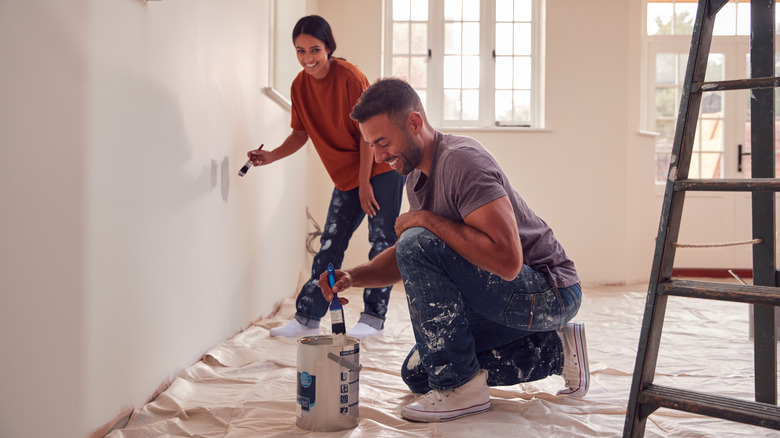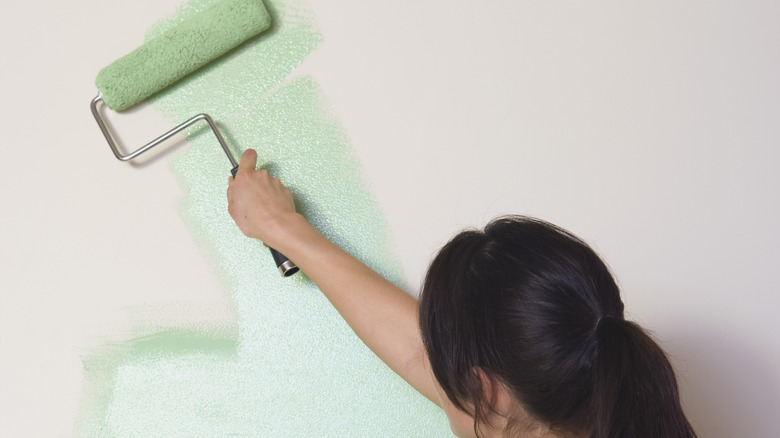Here's How Long You Should Really Wait Between Coats Of Paint
Interior design experts say to never underestimate the power of a fresh new coat of paint to spruce up your home. This simple change can transform a room on a budget, but painting is often easier said than done because the process comes with a variety of logistics that need to be figured out before jumping into the project. One of those logistics is timing between coats, but just how long do you have to wait?
Even when paint is dry to the touch, which can take about an hour, that doesn't mean the wall is ready for the next coat. Dry to the touch only means the paint won't transfer if you accidentally touch it. It'll actually take a few more hours for a wall to be ready for a second coat. Because most interior paints require at least two coats to provide full coverage and saturated color, that means scheduling enough time to ensure the previous coat is fully dry. If you jump into the next coat too early, it can cause the previous coat to lift, bubble, or drip, leaving behind unwanted texture instead of a smooth finish.
Recoat time depends on the type of paint
Both oil- and water-based paints can be used in the house, and each has its own recoat time, or the amount of time that needs to pass before you can add that second coat. Oil-based paints are durable, moisture-resistant, and level to a smooth finish, which makes them a great option for the moldings, trims, doors, and cabinetry, or other areas that require durability. However, that staying power comes with the tradeoff of a paint that requires a longer recoat time. After two to four hours, oil-based paints will feel dry to the touch, but the recoat time can be as much as 24 hours.
Latex or water-based paints tend to be more popular options because they're less expensive. Along with their resistance to cracking, chipping, and yellowing, water-based paints will be dry to the touch faster and require a much shorter recoat time. For these paints, time between coats can range from one to two and a half hours, depending on the finish of the paint.
What else can affect recoat time?
Recoat time is calculated under perfect conditions, meaning the environment that's most conducive for the paint to dry. Unfortunately, not every room naturally meets perfect conditions for paint drying, but that doesn't mean you can't get a room to meet those conditions. Temperature can play a role both when it's too cold or too hot inside. Oil-based paints dry best between 40 and 90 degrees Fahrenheit, while water-based paints do best in 50 to 85 degrees. In a room that's too warm, the top layers of paint are likely to dry too quickly which will stop the bottom layers from drying properly. On the flip side, cold temperatures may keep the paint from drying at all. Both extremes could also lead to lifting and cracking that looks unsightly.
Humidity is another factor, particularly high humidity. The excess moisture prevents the water in latex paint from evaporating, which is what causes the paint to dry. Keep this in mind if you open a window while painting because the humidity outside will affect the paint drying inside. Check out the weather to see what the humidity levels are before you start painting. If a room itself holds humidity, such as the bathroom, kitchen, or basement, consider using a dehumidifier to dry out the space when painting to encourage faster drying times. When some of these conditions can't be met, expect drying and recoat times to take a bit longer than usual.


